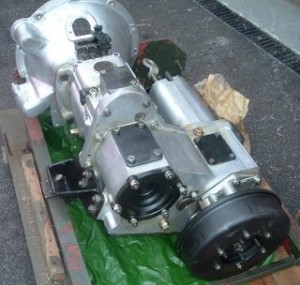 If you suspect transmission problems with your Land Rover, there are several steps you can take to minimize the effects of the trouble before your Lynwood Land Rover Transmission Service/Repair. Never consider not having a professional perform a full inspection of your transmission when there is even the hint of a problem! While you may be able to diagnose a leak in the system, it is best to allow the professionals handle the repair unless you have the tools and experience to assure the repair is completed properly.
If you suspect transmission problems with your Land Rover, there are several steps you can take to minimize the effects of the trouble before your Lynwood Land Rover Transmission Service/Repair. Never consider not having a professional perform a full inspection of your transmission when there is even the hint of a problem! While you may be able to diagnose a leak in the system, it is best to allow the professionals handle the repair unless you have the tools and experience to assure the repair is completed properly.
1. Transmission Fluid Level Check — with the engine running, and your Land Rover in PARK, check the transmission fluid level 2-3 times. Multiple readings will assure consistency. Add fluid as indicated. If problem seems to have dissipated, chances are you have a leak in the transmission system.
2. Monitor Fluid Levels — after re-filling the transmission fluid, be sure to monitor the level very carefully to determine the severity of any leaks — especially if there is a small leak that is difficult to find. If allowed to fall to ‘low fluid operation’ range, your transmission will be subjected to excessive wear.
3. Visual Inspection — of all seals, gaskets and 0-rings to attempt localizing the problem area prior to service. Pointing out the problem area will relieve the frustration of getting a repair estimate.
If your transmission fluid level is good, but you still have transmission problems, Lynwood Transmission Repair & Service will likely:
1. Check Connections — at hoses, linkages and electrical junctions. Be certain all connections are tight and that electrical connection are free of corrosion.
2. Computer Diagnostics — shift and pressure control solenoids inside the transmission are controlled by computer, which must be scanned by a certified technician to determine any problems. Sensors that are part of the transmission include (but not limited to): Manual Linkage Position Sensor (MLPS); input speed sensor; output speed sensor; shift solenoid; and governor sensor.
3. Further Diagnostics — since not all problems can be sensed (or are scanning incorrectly), the technician will perform a test of all sensing relays to assure that the computer is being ‘fed’ the correct information. There are a number of problems that will not send a code alert to the computer, but can affect the transmission. With numerous sensors that are not part of the transmission but can affect its operation: Throttle Position Sensor (TPS); Mass Airflow Sensor (MAS); Manifold Absolute Pressure (MAP) sensor; Power Control Module (PCM); Differential Speed Sensor (DSS); Coolant Temperature Sensor (CTS); Intake Air Temperature (IAT) and others. Each sensor must be evaluated to be certain the signals are not corrupted.
By performing both a computer diagnostic test and a scan of each sensor, the inspection can determine whether the problem is with the transmission and/or the control system. The best way to assure a full diagnosis of your transmission problems is to let the Lynwood Land Rover Transmission Service & Repair professionals perform a thorough inspection of the entire system.


Great service and great mechanics